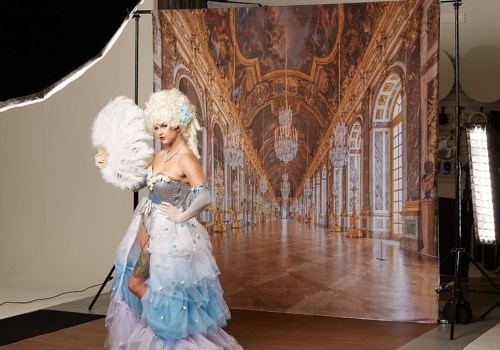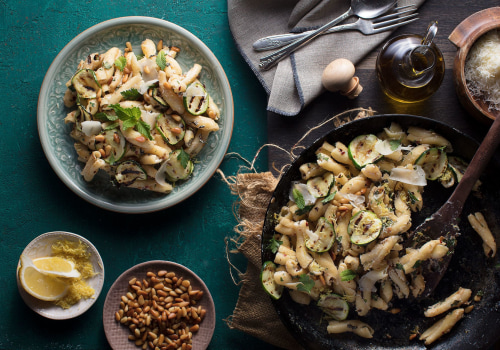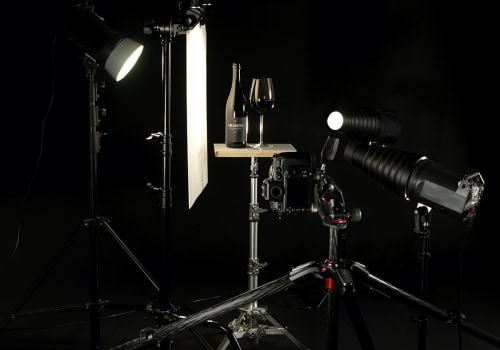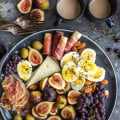Food photography is a complex and rewarding art form, and one of the most important elements to consider is how to balance your ISO and shutter speed settings. Getting these two settings just right can make the difference between a stunning shot and a mediocre one. In this article, we'll explain the basics of balancing ISO and shutter speed for food photography, as well as give tips on how to achieve the perfect balance.
Finding the Right Balance
Finding the right balance between ISO and shutter speed for food photography can be tricky. It’s important to understand the basics of how each setting works, and how they interact with one another.The ISO setting determines the sensitivity of your camera’s sensor to light, while the shutter speed controls how long the sensor is exposed to light. A higher ISO setting will make the sensor more sensitive to light, allowing you to shoot in lower light conditions, but it can also increase noise in your images. A faster shutter speed will freeze motion, but it can also result in a darker image. It’s important to find the balance between these two settings in order to capture stunning food photography shots.
The best way to find the right balance between ISO and shutter speed is to experiment. Start by setting your ISO to its lowest setting and your shutter speed to its fastest setting. Take some test shots and see how they look. If the images are too dark, you may need to increase your ISO or slow down your shutter speed.
If the images are too bright or grainy, you may need to decrease your ISO or speed up your shutter speed. Experiment with different combinations of settings until you find the right balance. It’s also important to consider the type of food you are photographing and the lighting conditions. Certain types of food, such as pasta dishes or baked goods, may require a higher ISO and slower shutter speed to capture all of the detail. On the other hand, dishes with lots of movement may require a faster shutter speed in order to freeze the motion.
Experimenting with different settings in different lighting conditions can help you find the best balance for each situation. Balancing ISO and shutter speed for food photography is an essential skill for any photographer. It takes practice and experimentation to find the right combination of settings for each situation, but once you have it down it can be incredibly rewarding. With the right settings, you can capture stunning food photography shots that will impress everyone.
Understanding ISO Settings
When it comes to taking great food photography shots, understanding ISO settings is essential. ISO settings measure the sensitivity of your camera's sensor to light, and can have a huge impact on the quality and clarity of your photos.By balancing the ISO settings with shutter speed, you can take stunning food photography images. When you adjust your ISO settings, you're essentially controlling how much light is allowed into the camera. A lower ISO setting will allow less light into the camera, resulting in darker images. Conversely, a higher ISO setting will allow more light into the camera, resulting in brighter images. However, it is important to note that higher ISO settings can also result in more noise or graininess in the image. The ideal ISO settings for food photography depend on the type of lighting available, as well as the desired effect.
If you are shooting in natural light or a low-light environment, a lower ISO setting is often best. This will help ensure that the photo has good color and sharpness. Conversely, if you are shooting in bright light or with a flash, a higher ISO setting may be necessary to capture all of the details in the photo. It's also important to pay attention to how the ISO setting affects shutter speed. A higher ISO setting will require a faster shutter speed to capture all of the details in the photo.
Conversely, a lower ISO setting will require a slower shutter speed to ensure that all of the details are captured. In conclusion, understanding and balancing ISO settings is essential for capturing stunning food photography shots. By adjusting your ISO settings according to your lighting and desired effect, you can take beautiful photos that showcase your culinary creations.
Choosing the Right Shutter Speed
Choosing the right shutter speed for food photography is essential for capturing stunning images. When selecting a shutter speed, you must consider how much light is available, the desired effect, and the type of food being photographed. Shutter speed affects the amount of light that enters the camera and the level of motion blur that appears in the image.A faster shutter speed will capture less light but will also freeze motion and create sharp images. On the other hand, a slower shutter speed will allow more light to enter the camera, but can also create motion blur. When photographing food, it's important to choose a shutter speed that will help to bring out the texture and vibrant colors of the food. Faster shutter speeds can help to reduce blur and capture sharp details, while slower shutter speeds can help to capture the motion and motion blur of ingredients being mixed or ingredients that are lighted from behind.
In addition to choosing the right shutter speed, it's also important to balance it with your ISO setting. The ISO setting determines the sensitivity of your camera sensor to light. If the ISO setting is too high, noise may be introduced into the image; if it's too low, you may need to increase your shutter speed or use flash to get enough light. Choosing the right shutter speed for food photography is essential for capturing beautiful images. By considering how much light is available, desired effect, and type of food being photographed, you can select a shutter speed that will help bring out the texture and vibrant colors of your food. Adjusting the ISO and shutter speed of your camera is essential for taking great food photography shots.
By understanding how these two settings work together, you can find the perfect balance for any lighting condition. Experiment with different settings until you find the perfect combination for each shot. With practice, you will be able to confidently use ISO and shutter speed settings to capture stunning food photography images.








Leave a Comment